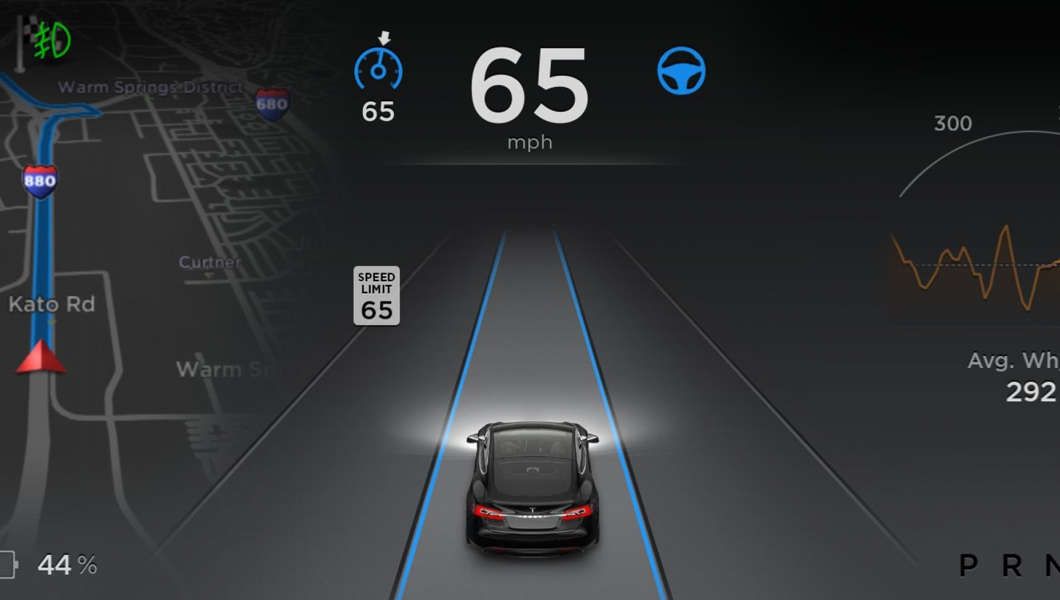Tesla has been hard at work refining its AutoPilot system after a number of AutoPilot-related accidents brought the automaker under fire. In August, we told you about AutoPilot 2.0 that would include new hardware and new software programming to the Model S, Model X, and Model 3. Then a couple of weeks later, Tesla announced an update that brought new safety restrictions to the system to help prevent drivers from becoming distracted while AutoPilot was engaged. Now, Tesla has announced yet another software update that focused around how the system sees the world using the built in Radar system found in each Tesla vehicle.
Every Tesla vehicle built since 2014 has had a radar system as standard equipment, but until now, that system has been secondary to the primary camera and image processing system. See, radar has limitations as it sees some things differently than we do. For instance, anything that is metallic – like a chrome bumper – can throw the system off. Something like the bottom of a beer can lying in the road can look much larger to a radar system. This obviously poses problems with the radar system being used as a primary system, but Tesla has found a workaround.
This newest update, dubbed Software 8.0, will use the radar system to take snapshots 10 times per second to create a 3D picture. By comparing these shots with one another, along with the car’s velocity and expected path, the system can determine whether or not something is a real obstacle and the probability of a collision. Furthermore, fleet learning comes into play as well. When a Tesla approaches an overpass with road signs, the system often sees this as something in the road. To tackle this, the system will take note of the potential obstacle and the driver’s reaction. This information is then sent to the cloud where it is compiled and analyzed. After so many passes, a certain area can be whitelisted as safe so that every Tesla vehicle driving through the area with AutoPilot engaged knows that the overpass is an overpass and not a truck in the road or some other obstacle. It should be noted that this part of the system will function whether AutoPilot is engaged or not.
Continue reading for the full story.
Prior to this update, the camera system was the primary eyeball of the AutoPilot system with radar being a supplement. Now, the roles are actually being reversed with radar being the primary method of vision for they system and the camera being the secondary set of eyes. Outside of what you’ve already read above, there are other enhancements to the system as well. Some of these enhancements include more prominent interface alerts, automated highway exiting on indicator activation or when navigation is enabled, improved lane change availability, and eventually – after enough data collection – autosteering will activate to avoid collisions as well. Curve speed adaption will now use fleet-learned roadway curvature, and the car will now offset in its lane when overtaking a slower vehicle that is close to its lane edge.
All told, this update should eventually make the autopilot system safer. Of course, it will naturally get better as time goes on and more data is collected from all of the Tesla vehicles on the road. One of the bigger benefits of using radar as the primary system is that radar can see ahead of other vehicles on the road, as well as through fog, rain, snow, and the like. This means that Tesla vehicles can actually see obstacles far ahead of it and can brake ahead of time to avoid a collision even if the vehicle in front doesn’t see what is coming. To illustrate this a bit, think about accidents that occur during times of heavy fog. While a normal driver may not be able to see a car stopped in the middle of the road, a Tesla two vehicles back can and will react accordingly. If you’re interested in reading Tesla’s full announcement about the update, you can see it here.
What do you think about all of this? Is it a good step made by Tesla, or are you one of the many that think the system should be disabled until it can be perfected? Let us know in the comments section below.

